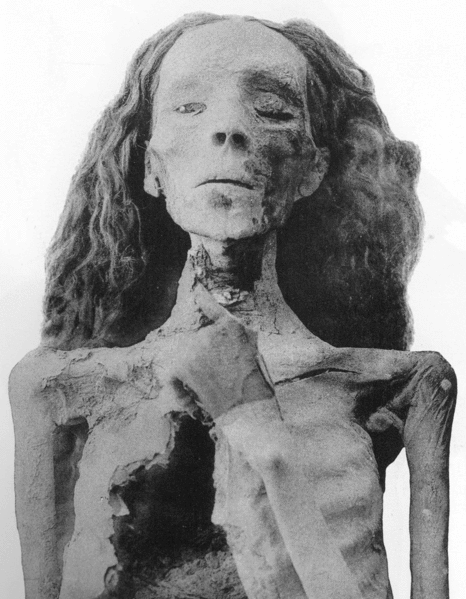
I've just written an article for New Scientist about a suggestion that researchers should consider issues such as consent and privacy when working on ancient mummies. I started off thinking this was a pretty strange idea. How can the concept of consent have any meaning for someone who has been dead for thousands of years?
But after researching the story I reckon it is at least a question worth thinking about. Strict ethical guidelines quite rightly cover research on the recently dead. So when exactly do human remains become fair game for scientists, and why?
My news story was sparked by a discussion paper in the Journal of Medical Ethics by anatomist (and mummy researcher) Frank Rühli and ethicist Ina Kaufmann of the University of Zurich, Switzerland. They argue that human remains retain their moral value no matter how old they are. While they don't give any advice on what research should or should not be done, Rühli and Kaufmann want scientists planning to study mummies to consider whether the person who has died would have been likely to consent to the research, and weigh that up against the work they want to carry out.
For example, perhaps Tutankhamun would have been happy with the long-lasting fame that research on his mummified body has brought him. Then again maybe he would be aghast at the endless speculation about the various diseases that he might have suffered from.
I ran this idea past a few researchers who work on ancient human remains. They weren't too impressed by the idea of second-guessing the wishes of someone who has been dead for hundreds or thousands of years. Their concerns are more practical, focused on how their research is likely to affect people who are still living, rather than the dead themselves.
Franco Rollo of the University of Camerino, Italy, has carried out research on Ötzi the iceman, who died in 3300 BC and whose mummified remains were found in the Alps. Rollo argues that as long as a body comes from a distant or ancient society, the ethical concerns are minimal. For example, he says he has "no problem at all" studying important figures from the Italian Renaissance, such as the Duchess of Urbino, or members of the Medici family. On the other hand, he was once involved in a project that aimed to study the bodies of two Austrian soldiers who died on the Alps at the end of World War I. It was stopped by the Black Cross, an Austrian organisation that honours dead soldiers, so the men could be buried in a war cemetery.
Likewise Helen Donoghue of University College London, who has analysed human remains from around the world for signs of infectious disease, says she has no qualms about research on mummies as long as it is carried out for valid scientific reasons, and the work is not opposed by any living descendants. She is carrying out research on the naturally mummified remains of some Hungarian people who died as recently as the 18th century, and says she has no problem doing this because the descendants are happy for the work to be carried out.
I got a different perspective, however, from an ethicist I interviewed. Soren Holm is a philosopher and bioethicist based at the University of Manchester, UK, and editor-in-chief of the Journal of Medical Ethics. He says that there are situations where the rights of the dead themselves should be taken into account. For him the important factor is whether a person is identifiable, and therefore still has a reputation that can be damaged.
The more famous the person, the more careful researchers should be. As an example he cites Queen Christina, who ruled Sweden in the early 1600s. Because she never married and often dressed in men's clothes, there have been calls to test her DNA for signs of a gender disorder, something that Holm suspects may be politically, rather than scientifically, motivated. "Even if we end up saying that we should allow the research, there is still a question to be discussed," says Holm. "We can't say that her reputation is irrelevant."
Holm says that such arguments must apply to identifiable individuals no matter how old they are. "If we still have a narrative about someone, it can't really matter whether they are hundreds of years old, or thousands of years old," he says. "We can still tell something about them that can detract from their reputation." He's not trying to stop valid research, but wants scientists to think about whether their research is really motivated by scientific questions, or simply by gossip or curiosity: "Do we really need to sort out the intricate details of Tutankhamun's family history?" (See the bottom of my New Scientist article for some interesting comments about whether curiosity is a sufficient justification for research.)
I don't know if Holm would agree with this but maybe it's a case of being thoughtful and respectful about the research that is carried out, rather than saying what can and can't be done. If we are going to treat dead people's remains with respect, then perhaps we should extend that courtesy to their reputations too.